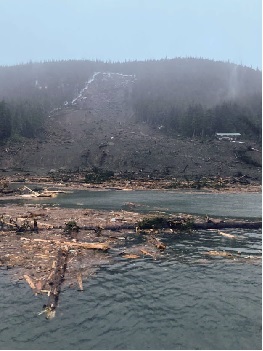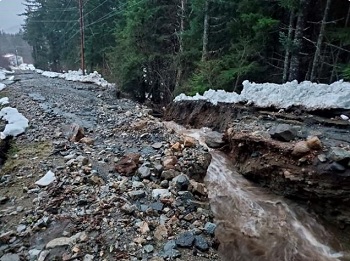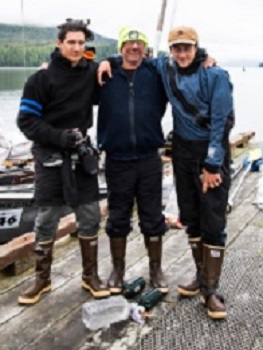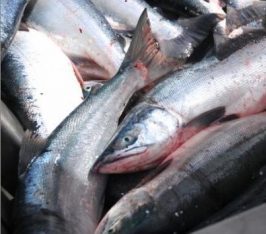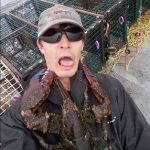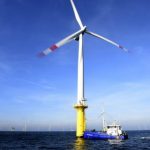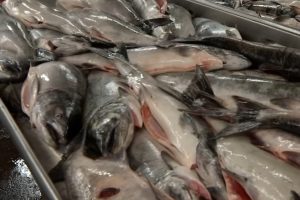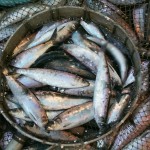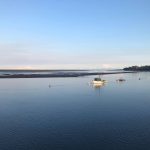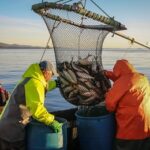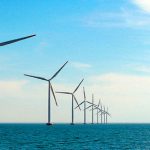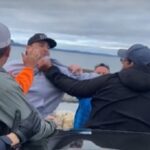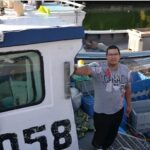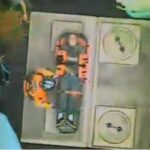Tag Archives: Alaska
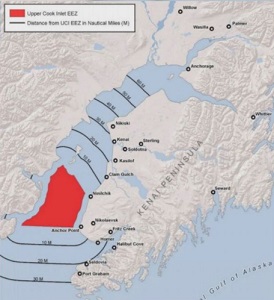
NPFMC decision puts Cook Inlet commercial salmon fishery in jeopardy
Final action by the North Pacific Fishery Management Council on commercial salmon fishing in Cook Inlet threatens to exclude drift gillnet harvesters from fishing in the inlet’s commercial waters at the start of the 2022 fishing season. In a near unanimous decision reached during the council’s virtual meeting on Monday, Dec. 7, the panel selected an alternative that would close off to the commercial fleet federal waters outside of three miles from shore, an area where most of the fleet get the bulk of its catch. >click to read< 16:43

U.S. Coast Guard admits it failed to warn Bering Sea fishing fleet about known Russian military exercises
Adm. Charles Ray told a U.S. Senate panel Tuesday that the Coast Guard knew Russia was conducting military exercises in August and failed to inform members of the U.S. Bering Sea fishing sector, Alaska Public Media reported. “This was not our best day with regards to doing our role to look after American fishermen,” Ray said. “I’ll just be quite frank: We own some of this.” The captain of the fishing vessel, Northern Jaeger, believed he had no choice but to comply and sail five hours south,,, >click to read< 13:10
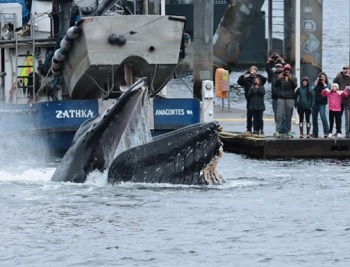
Humpback whale boosts spirits in struggling Alaskan town
A humpback whale has been frequenting Ketchikan, Alaska, almost daily for the past month, helping to lift spirits as the city reels from a lack of tourism. The whale, nicknamed Phoenix, is feeding on herring and possibly salmon fry with dramatic upward lunges, sometimes just yards from onlookers on docks and walkways. As days shorten and a bleak winter approaches, more residents are discovering the joy of searching for Phoenix throughout the channel fronting the town. photos, >click to read< 08:02
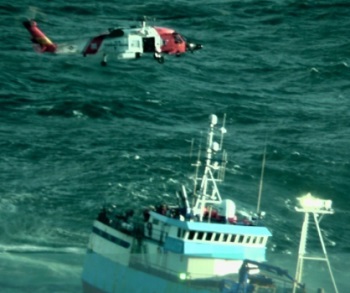
Coast Guard medevacs chief engineer 70 miles northwest of Saint Paul Island, Alaska
The Coast Guard medevaced a fisherman from a commercial fishing vessel approximately 70 miles northwest of Saint Paul, Tuesday. An MH-60 Jayhawk helicopter crew from Air Station Kodiak safely hoisted the 43-year-old man, at approximately 12:25 p.m., and transferred him to awaiting emergency medical services personnel in Saint Paul Island for further transport to Anchorage. At 7 p.m. Monday, 17th District command center watchstanders received a medevac request from F/V Frontier Spirit for the chief engineer who was experiencing abdominal pain. >video, click to read< 15:30
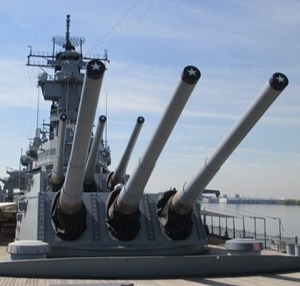
Seafood industry seeks protection from Russian military exercises in U.S. waters
U.S. Coast Guard capability to safeguard national interests and promote economic security in the Arctic will be the subject of a congressional hearing on Dec. 8, one in which Alaska’s commercial fishing entities have a special concern. “From our vantage point, on the front lines of a changing Arctic, a robust U.S. military presence to protect U.S. interests in the region is simply non-negotiable,” said Stephanie Madsen, executive director of At-Sea Processors. The trade association, based in Seattle, represents six member companies who own and operate 15 U.S. flag catcher/processor vessels who harvest Alaska Pollock in the Bering Sea and Aleutian Islands and Pacific whiting in Pacific Northwest coastal waters. >click to read< 08:26
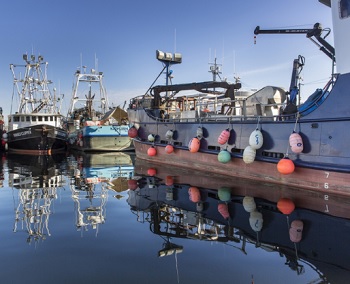
Behind the scenes with Seattle’s crab experts
It’s king crab season in the Bering Sea. That means around 300 people, including many from Fishermen’s Terminal in Seattle, the home port to the North Pacific Fishing Fleet, fly into Dutch Harbor, Alaska, for the harvest. And when king crab season is over, many of these fishermen and women switch to bairdi crab and snow crab. Which means they’ll be busy for four to five months and there will be a lot more crab on the market. As the executive director of Alaska Bering Sea Crabbers, a nonprofit trade association that represents the crab industry, Jamie Goen knows a lot about the work that brings crab from the bottom of the sea to our tables. >click to read< 09:19
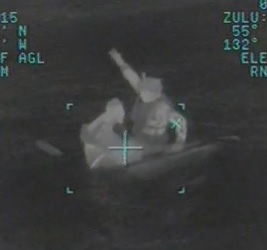
Coast Guard hoists man clinging to a piece of debris from water in Union Bay, Alaska
KODIAK, Alaska – The Coast Guard rescued a 70-year-old man from the waters of Union Bay, Alaska, northwest of Meyers Chuck, Sunday. A Coast Guard Air Station Sitka MH-60 Jayhawk helicopter crew hoisted the man, who was in the water clinging to a piece of debris. “What saved this man’s life was his essential survival equipment,” said Lt. Justin Neal, a helicopter pilot from Air Station Sitka. “He had an emergency position indicating radio beacon registered in his name that allowed us to find him quickly, and his survival suit kept him warm long enough for us to rescue him.” Weather conditions at the time of the incident were up to 57 mph winds with 10 foot seas. >click to watch< 07:57
A man on board the fishing vessel Irony, fell into the water and was found clinging to a piece of debris by the US Coast Guard Sunday – >click to read<
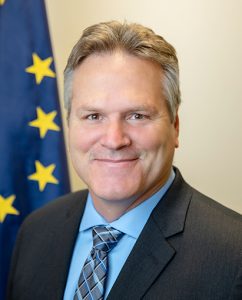
Kenai legislators ask for fishery disaster declaration
Members of the Kenai Peninsula Legislative Delegation sent a letter to Gov. Mike Dunleavy on Wednesday urging him to declare a state economic disaster for the Upper Cook Inlet fisheries and provide for a recovery plan. The industry saw an 82% reduction in the 10-year average ex-vessel value – a measure of the monetary worth of commercial fish landings. The request from legislators comes two weeks after the Kenai Peninsula Borough unanimously issued a declaration of a local disaster for the 2020 Cook Inlet Commercial Salmon Fishing Season. Kenai Peninsula legislators hope Gov. Dunleavy will follow suit. “Commercial fishermen in Upper Cook Inlet experienced one of the worst seasons on record,”,, >click to read< 08:46
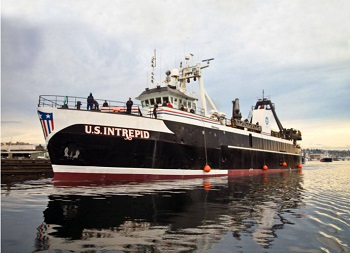
Supreme Court hears case in dispute over fisheries landings tax
Millions of dollars of fish landing taxes are at stake in a lawsuit now being deliberated by the Alaska Supreme Court,, The court heard oral arguments Oct. 21 in a lawsuit brought against the State of Alaska by Seattle-based Fishermen’s Finest Inc. in which the company argues Alaska’s fishery resource landing tax violates a prohibition on taxes or fees levied against goods on the way to export in the U.S. Constitution. Jim Torgerson, an attorney for Fishermen’s Finest, argued that the fish harvested and processed in federal waters by the company’s catcher-processor vessels have started their journey to foreign markets when it arrives at Alaska ports but before being shipped worldwide.>click to read<11:27
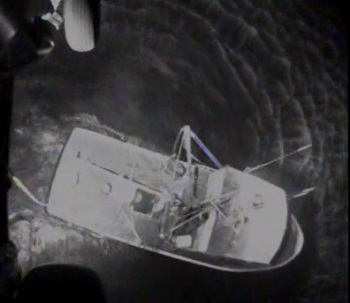
Coast Guard drops dewatering pump to disabled fishing vessel taking on water near Icy Bay, Alaska
The Coast Guard assisted a fishing vessel taking on water and disabled, six miles south of Icy Bay, Alaska, Wednesday. A Coast Guard Air Station Sitka MH-60 Jayhawk helicopter crew delivered a dewatering pump at about 9 p.m. to the 55-foot fishing vessel Elise Marie that was taking on water. The Elise Marie crew was able to use the pump to keep up with the flooding while they waited for further Coast Guard assistance. Watchstanders in the Sector Juneau Command Center received initial notification requesting assistance from Elise Marie via InReach device at approximately 7 p.m. Watchstanders directed the launch of multiple assets to assist, including a plane, a helicopter, and Coast Guard Cutter John McCormick. >Video, photos, click to read< 18:33

Alaska Supreme Court hears challenge to fish landing tax
Since the 1990s, Alaska has taxed seafood caught by factory trawlers and floating processors through the Fisheries Resource Landing Tax. Even though the fish is caught outside the 3-mile line in what’s considered federal waters, it’s often brought to Alaska fishing ports before loaded on cargo vessels and shipped overseas. But the Washington state company, Fisherman’s Finest, is now challenging the state’s tax in court, arguing it violates a pair of provisions of the U.S. Constitution that restricts coastal states from imposing tariffs or duties on goods brought into and out of a state. >click to read< 17:28
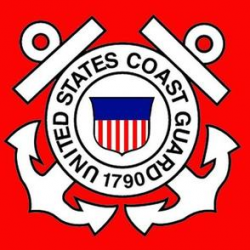
Coast Guard medevacs fisherman 100 miles off Cold Bay, Alaska
The Coast Guard medevaced a man from a fishing vessel Tuesday approximately 100 miles northwest of Cold Bay. An Air Station Kodiak MH-60 Jayhawk helicopter crew hoisted the man at 6:55 a.m. and transferred him to awaiting emergency medical services in Cold Bay for further transport to Anchorage. Watchstanders in the 17th District command center in Juneau received the request for the medevac from the fishing vessel Defender at approximately 7 p.m. Monday for a 26 year-old crew member who was experiencing eye and head pain. >click to read< 21:11
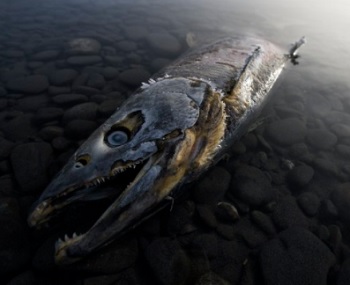
Scientists perplexed by this year’s low chum salmon numbers in Yukon River
The latest estimates aren’t just bad, they’re “absolutely dismal,” says Stephanie Quinn-Davidson, director of the Yukon River Inter-Tribal Fish Commission in Alaska. Every year scientists count fish as they swim upstream by Eagle, Alaska, on the way back from the ocean. Scientists manually review the data from the Eagle sonar. While it can be tricky, they can separate chum from other fish by size, speed, and direction of travel. This year the station’s fall chum estimate is 23,828 fish. >click to read< 08:47

Several Fisheries around Alaska asking for disaster relief – Five legislators ask Dunleavy for disaster declaration
Several fisheries around the state are asking for disaster relief from the state and federal government due to low returns, low prices due to the pandemic, and alleged mismanagement. Seafood processors are also struggling. Southeast Alaska is asking for disaster funds due to low coho returns and low prices on the heels of a disaster declaration in 2016 due to a crash in pink salmon numbers. >click to read< 10:36
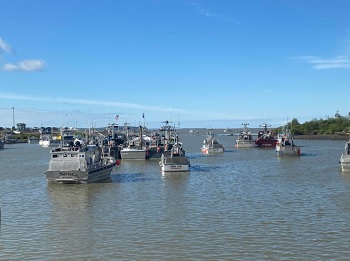
For Alaska’s seafood processors, the Coronavirus pandemic has cost tens of millions
Heading into the 2020 fishing season, many people were concerned that seafood workers from out of state would bring COVID-19 to rural communities. Processing companies managed to keep the disease under control. but at a big cost. Now, economists are looking at that financial toll. To keep track of how the pandemic is shaping the seafood industry, economists at the McDowell Group have started to publish monthly briefs for the Alaska Seafood Marketing Institute. “It’s interesting to describe a crisis when you’re in the crisis, right? And that’s our situation,” said Garrett Everidge, an economist at the McDowell Group. >click to read< 15:15
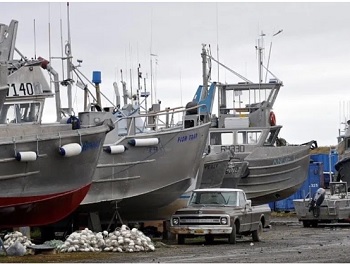
Special report: Pebble, and the reality of life in the region for those without commercial fishing permits
Pebble Mine is a story of Alaskans and Native peoples being prohibited from using their natural resources. The mine is of tremendous significance to the Alaska people touched by it, but not in the ways that have been portrayed in media…incessantly. Among the thousands of articles, press releases, documentary-style videos, and advertisements written and paid for by Outside environmental activist groups and wealthy donors, none mentions the people whose lands and lives will actually be affected by the mine. While Alaskans love and care about their State, not all have had their voices heard. Many have been drowned out. Most of the general public outside these small remote communities are probably unaware that there even are other views about the mine, voices in support. It’s time they were heard. >click to read< 12:54
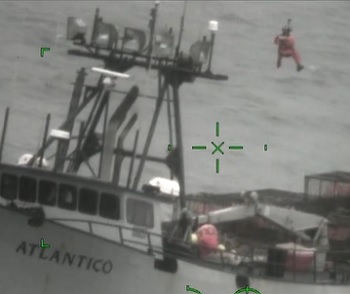
Coast Guard medevacs injured fisherman near Cold Bay, Alaska
The Coast Guard medevaced an injured fisherman approximately 40 miles west of Cold Bay, Alaska, Wednesday. At 2:30 p.m. an Air Station Kodiak MH-60 Jayhawk helicopter aircrew hoisted the injured man and transferred him to awaiting emergency medical services in Cold Bay for further transport to Anchorage. At 8:34 a.m., command center watchstanders received a medevac request from the 89-foot fishing vessel Atlantico for a 40 year-old crewmember who sustained a back injury. Video, >click to read< 22:17
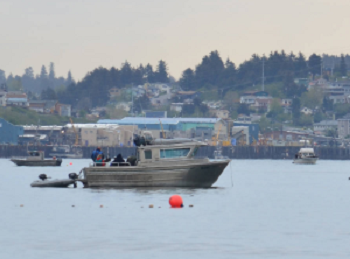
Bizarre salmon season winds down short of state projections
On top all the other effects of the coronavirus pandemic, it’s been a strange year for Alaska’s commercial salmon fisheries. As the fisheries are winding down, the total landings are about 17 percent behind the projections statewide. The Copper River sockeye run was a flop, as was the chum run statewide, and the silver salmon harvest was down everywhere except Kodiak and Bristol Bay. Prices were down, too, and processors had the extra expense and responsibility of keeping workers healthy in remote communities at close quarters. >click to read< 22:14
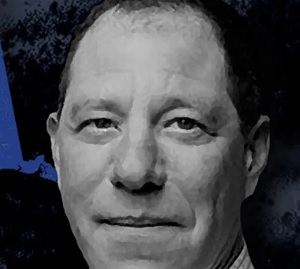
Sexist much? Al Gross says it takes ‘cajones’ to do a job
In Al Gross’ latest radio ad, he says that in spite of what he has said on the record, he’s not really a liberal, but an Alaskan. He is walking back his previous statements, in which he clearly said he will join the Democrats, which would put Sen. Chuck Schumer in charge of the Senate. But then he gets confused about what it takes to be an effective senator. Gross says he’s a man who has “the cajones” to do the job of U.S. Senator. It’s an odd statement for someone as liberal as Gross, who stands with Planned Parenthood in favor of late-term abortion. Especially ballsy as a Juneau boy taking on a U.S. Marine who has served in Afghanistan. >click to read< 09:08

Russian war ships cause stir for US fishing fleet off Alaska
“We were notified by multiple fishing vessels that were operating out the Bering Sea that they had come across these vessels and were concerned, so they contacted us,” Coast Guard spokesman Kip Wadlow said. The Coast Guard contacted the Alaskan Command at Joint Base Elmendorf-Richardson, which confirmed the ships were there as part of a pre-planned Russian military exercise that was known to some U.S. military officials, Wadlow said. >click to read< 14:25
A Russian submarine surfaced near Alaska on Thursday during a Russian war game exercise, U.S. military officials said. It was unclear why it surfaced. >click to read<
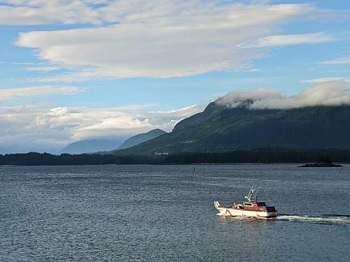
Metlakatla Indian Community suing Gov. Mike Dunleavy and senior state officials over fishing rights
The state’s sole Native reservation says the commercial fishing permit system unfairly prevents local fishermen from harvesting on their traditional fishing grounds, a right Metlakatla says is guaranteed to the tribe by Congress. The tribe of Metlakatla is asking a federal judge to prevent the state from requiring commercial fishing permits for tribal members. The people of Metlakatla have called Annette Island home since the late 19th century. That’s when roughly 820 Tsimshian people migrated with an Anglican missionary from coastal British Columbia to the then-uninhabited islands south of Ketchikan. But they weren’t just after land for a settlement. “The Annette Islands would have been worthless without access to fish and its adjacent fisheries,” attorneys for Metlakatla wrote in a lawsuit filed August 7 in federal court. >click to read< 18:06

Alaska and B.C.’s salmon runs expected to be worst ever recorded
Salmon returns on the west coast look bleak this year. Alaska’s salmon returns have been so poor that some communities already are claiming fishery disasters. The socket salmon run on B.C.’s Fraser River is expected to be the worst ever recorded,, in Alaska, the Cordova City Council passed a resolution last week, asking the state to declare disasters for both the 2018 Copper River sockeye and chinook salmon runs and the 2020 sockeye, chum and chinook runs at the Copper River and Prince William Sound,, The Pacific Salmon Commission (PSC) says this year may turn out to be the worst for sockeye salmon in the Fraser River since tracking began in 1893, >click to read< 12:56
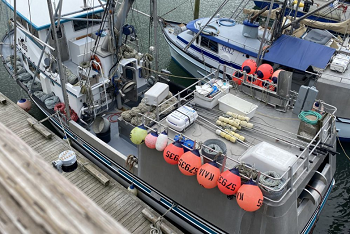
Alaska fishermen face ‘perfect storm’ of problems during Coronavirus pandemic, but state grants could help
On Friday, the Alaska Department of Commerce, Community and Economic Development announced that the COVID-19 small business grants program was being expanded. Starting Aug. 6, commercial fishermen across Alaska can apply for grants worth between $5,000 and $100,000. Before that date, fishermen were ineligible for help as they typically don’t have business licenses. Many in Alaska’s fishing industry need the assistance. Robert Venables, the executive director of Southeast Conference, said fishermen across the region had been reporting poor returns. “This year it’s been a perfect storm, the slump has continued. The catch is even worse than last year, by far,” Venables said. >click to read< 13:56
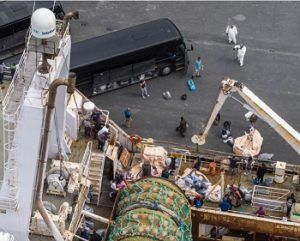
Trump admin Coronavirus task force urges Alaska to require masks for seafood plants and hot spots
The state should mandate masks, especially in seafood processing plants and places with high or rising case counts, to slow Alaska’s explosive coronavirus infection rates. That’s the recommendation of a July 26 report distributed to states by the Trump administration’s coronavirus task force,,, The update summarized the state’s largest COVID-19 outbreaks to date. The top four involve the seafood industry and together involve more than 350 people: 139 out of about 252 workers at the OBI Seafoods plant in Seward; 85 out of about 119 workers on the factory trawler American Triumph; 76 workers out of about 135 at the Copper River Seafoods plant in Anchorage; and 62 out of about 150 at the Alaska Glacier Seafoods plant in Juneau. >click to read< 09:49
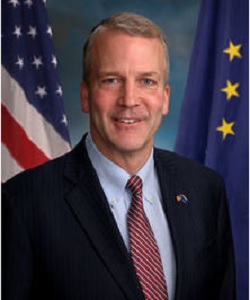
United Fishermen of Alaska dismiss Al Gross, endorse Senator Dan Sullivan
The announcement comes as a bit of a body blow to the campaign of his opponent, Al Gross, who presents himself as a commercial fisherman from Petersburg. This is an endorsement that should have come easily for someone with an Alaska gill net permit. Many in the fishing industry are independent voters, and Gross also presents himself as an independent, although he is running on the Democrats’ ticket and with the Democrats’ resources and endorsement. Sen. Sullivan has demonstrated leadership and effectiveness in advancing the interests of Alaska’s fisheries and fishermen across the state, said UFA President Matt Alward. by Suzanne Downing, >click to read< 11:51
Coast Guard Air Station Kodiak crew medevacs an injured fisherman north of Kodiak Island
At approximately 12:45p.m., Sector Anchorage command center personnel received notification from the wife of the fishing vessel’s master requesting a medevac for an injured crew member. District 17 command center personnel directed the launch of an Air Station Kodiak MH-60 Jayhawk helicopter aircrew to respond. At approximately 1:42 p.m., the aircrew landed on a nearby beach and further transported the man to local EMS. “Good communications from the boat, excellent flexibility and the captain’s expert seamanship enabled a very quick pick-up and transfer of the injured fisherman to medical care.” >click to read< 08:02






